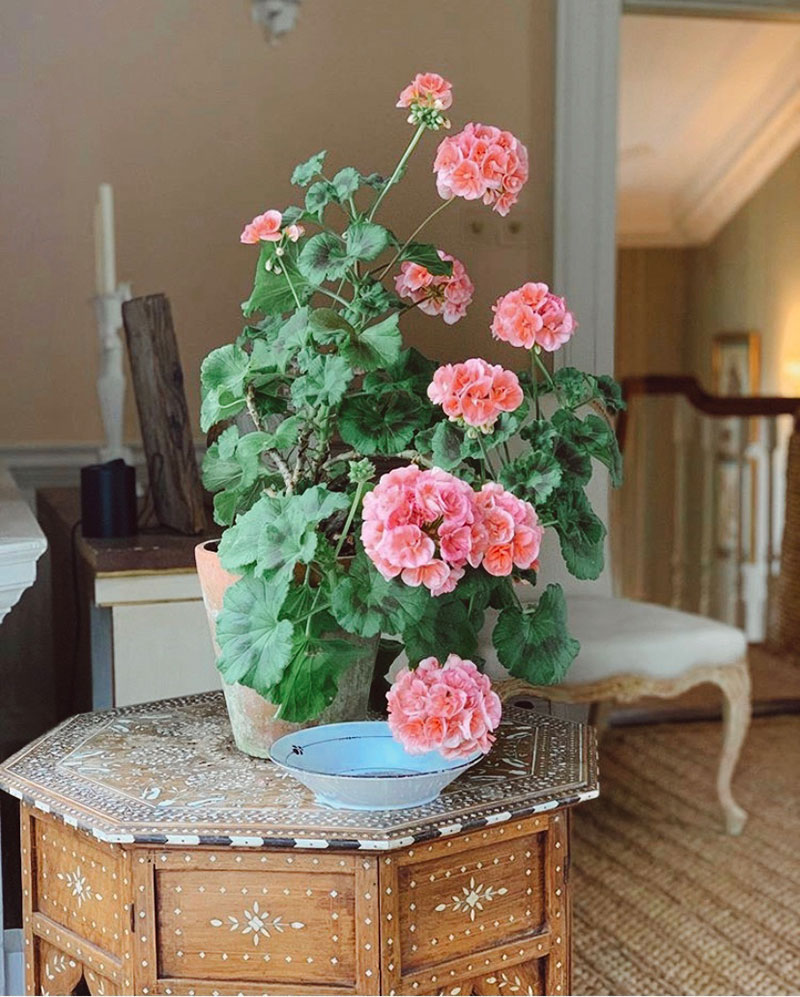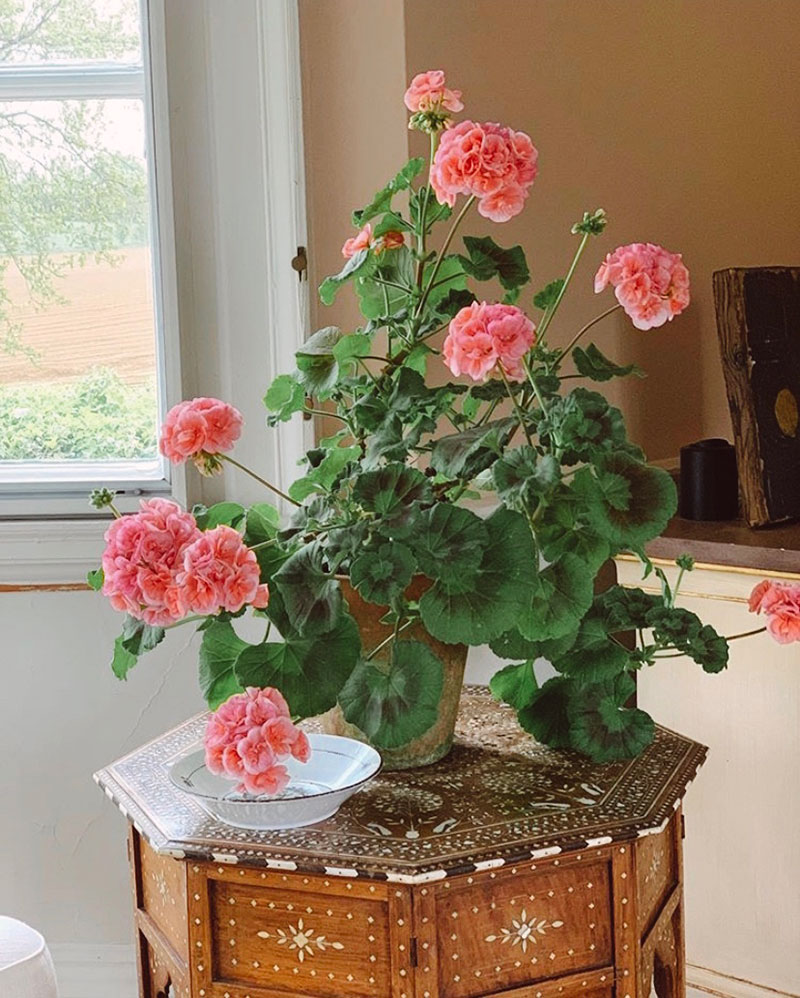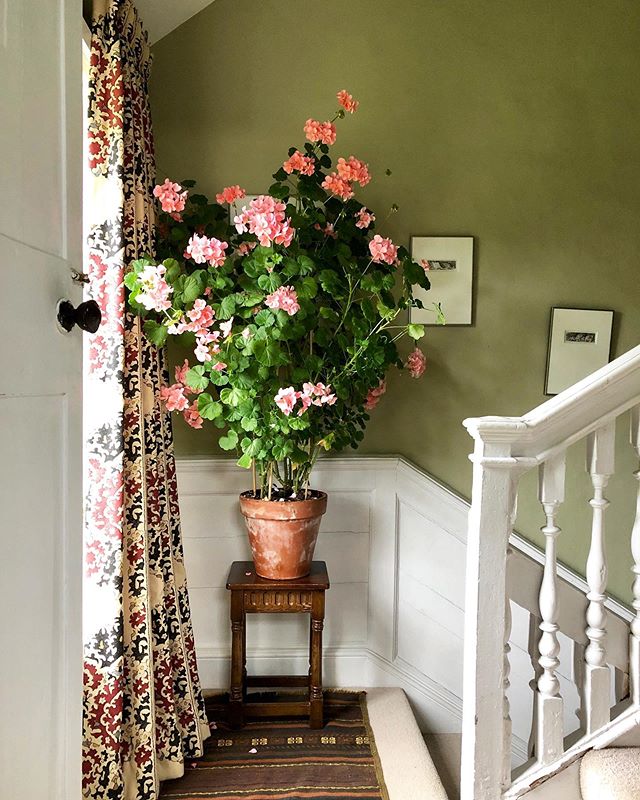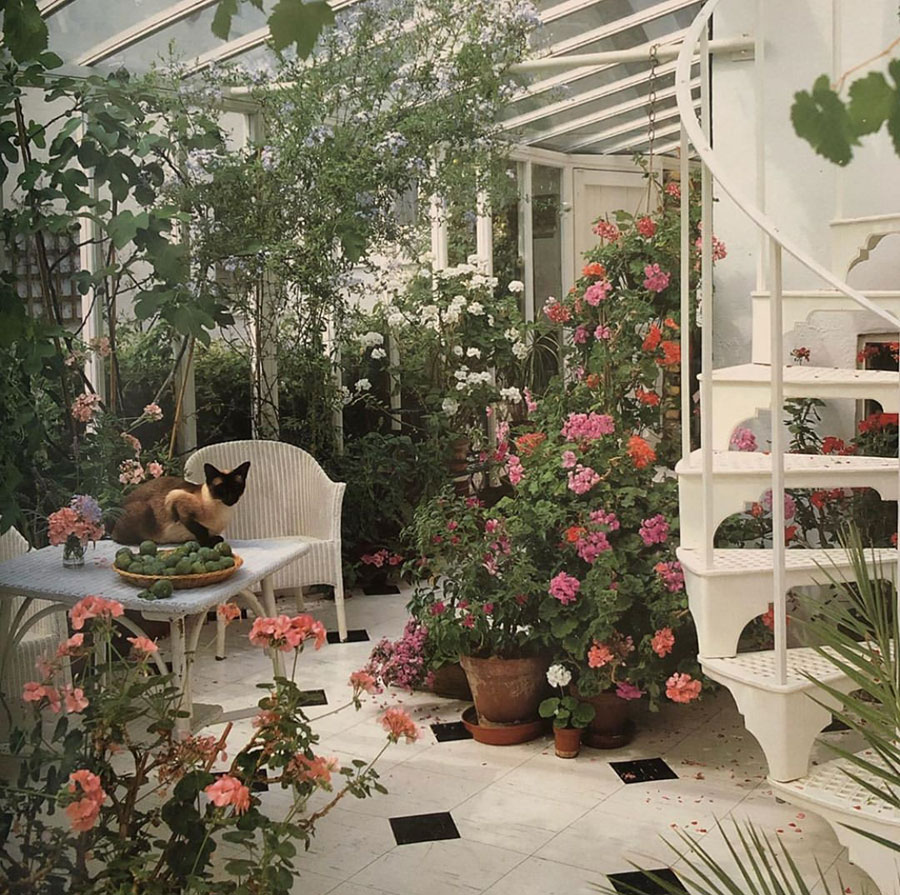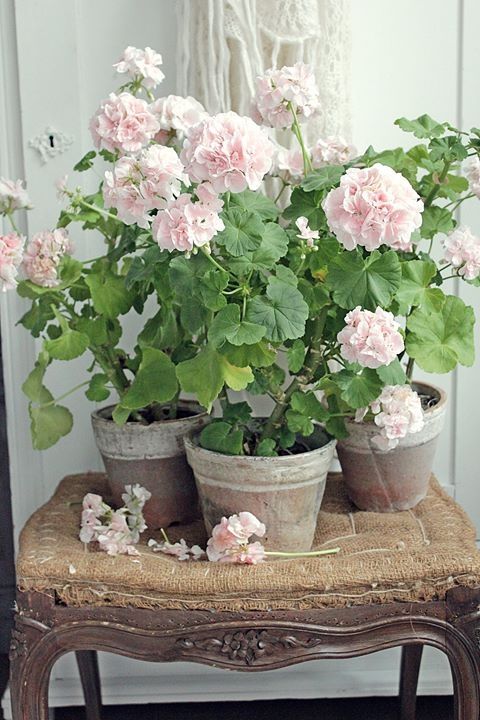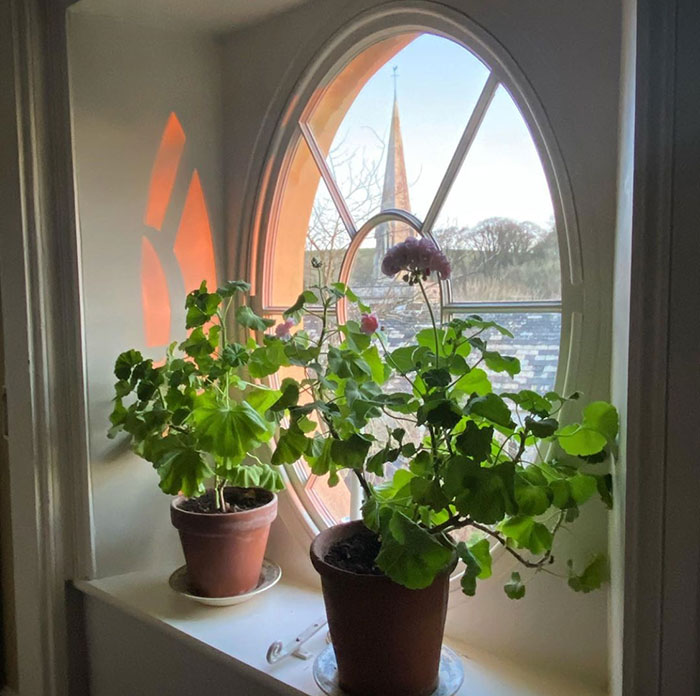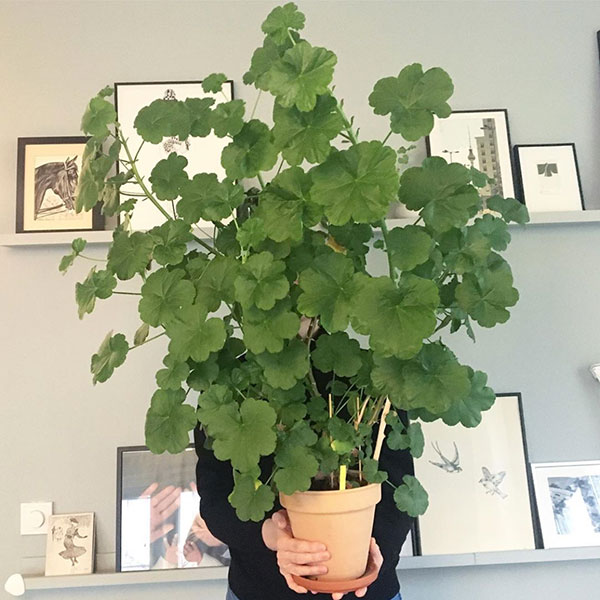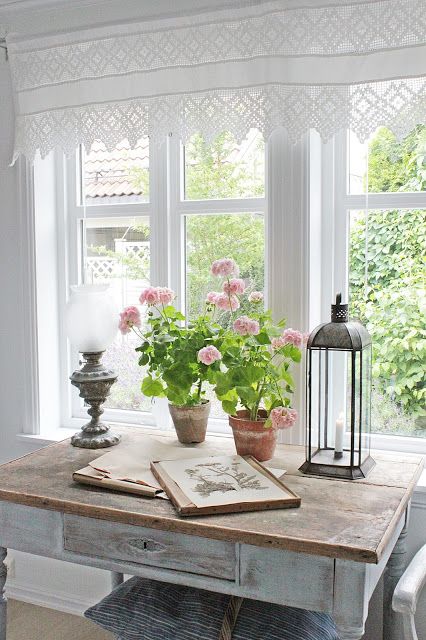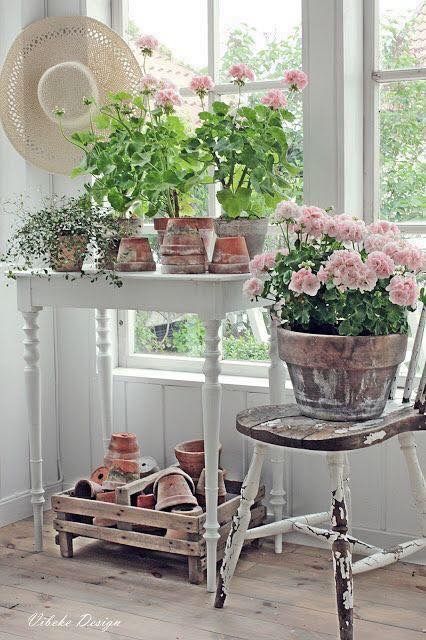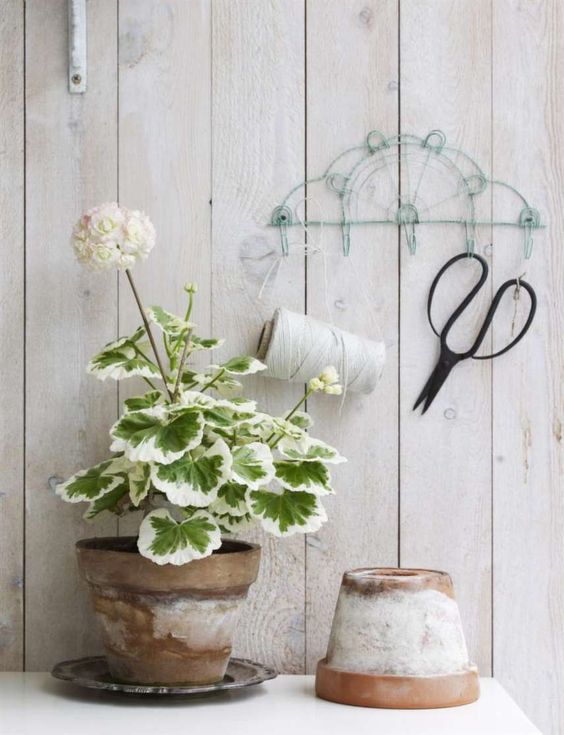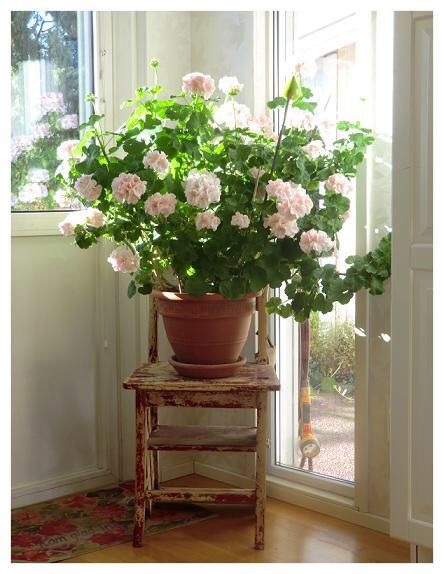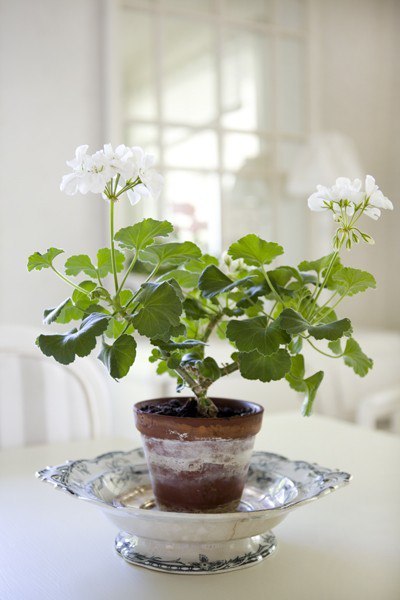Pelargonium
There is a footbridge in our old home city of Valencia, Spain that is famous for having, along both its railings, clusters upon clusters of cheerful red geraniums, a live flower installation that is maintained all year long. It’s called the Pont de les Flors and it is rather spectacular. Come to think of it, all around the city there are geraniums―encircling grand fountains and monuments, and in flower boxes hanging off balcony railings. Our neighbour across the street had the most impressive towering geraniums in her flower pots every spring and summer, plants whose leaves would stay green all winter long, after the flowers had faded and the petals caught in the wind.
While I had always admired her geraniums, had never really took to the plant in general, thinking it a bit too common. That is, until I saw the giant geranium plant in the image above, and realised that it not only would make a stunning indoor plant, but that it would grow enormous and happy contained in a terra cotta pot. Since then, I have a new-found love for the geranium and hope to add a few to the windowsills here at the cottage.
The word geranuim, in its modern interpretation, when referring to the cheerful flowering plants we often see in windows and boxes in the bright summer sun is actually a bit misleading. What we are really referring to is Pelargonium (pɛlɑːrˈɡoʊniəm), a member of a group of plants that have commonly come to be called geraniums.
Pelargonium is a genus of flowering plants that includes about 200 species of perennials, succulents, and shrubs, commonly known as geraniums, pelargoniums, or storksbills (also known as cranesbills). Both genera belong to the family Geraniaceae. 18th-century Swedish botanist Carl Linnaeus originally included all the species in one genus, Geranium, but they were later separated into two genera by Charles L’Héritier in 1789.
Pelargonium species are evergreen perennials indigenous to temperate and tropical regions of the world, with many species in southern Africa. They are drought and heat tolerant, but can tolerate only minor frosts. Pelargonium have variegated leaves and a long flowering period, with a wide range of flower colours: from white to pale pinks, ruby red to fuchsia.
Many geranium species have heavily scented leaves and are known for their aromatic green foliage, the fragrance of which varies from plant to plant. According to The Southern Living Garden Book, “Plants’ common names usually refer to the fragrance of their leaves: Almond geranium (P. quercifolium), apple geranium (P. odoratissimum), lime geranium (P. nervosum), nutmeg geranium (P. x fragrans ‘Nutmeg’), peppermint geranium (P. tomentosum). Other geraniums produce fragrance that smell like roses and lemons.”
Geranium leaves can also be used for culinary purposes, as both the flowers and aromatic foliage are edible. Fresh leaves of all types can be used for flavouring sugar, jelly and iced drinks and added to iced tea, lemonade, pastries, pound cakes and salads. Dried leaves can be added to sachets to scent drawers and closets and also used to create potpourri.
